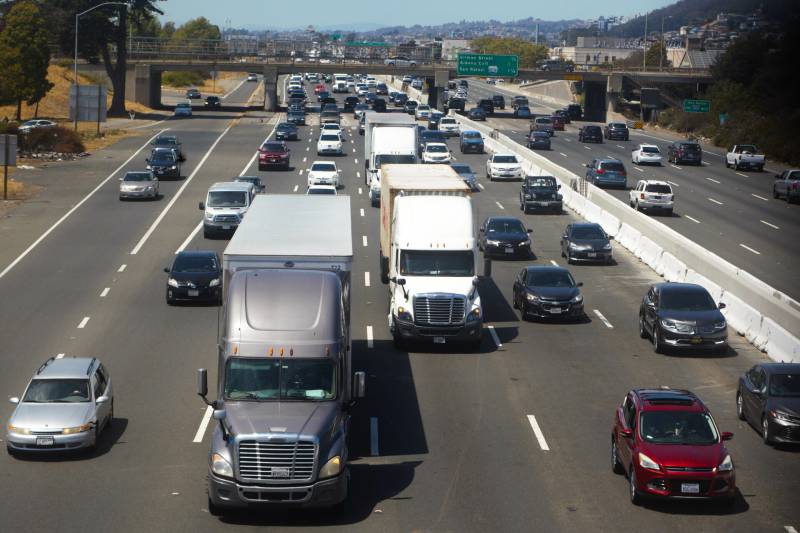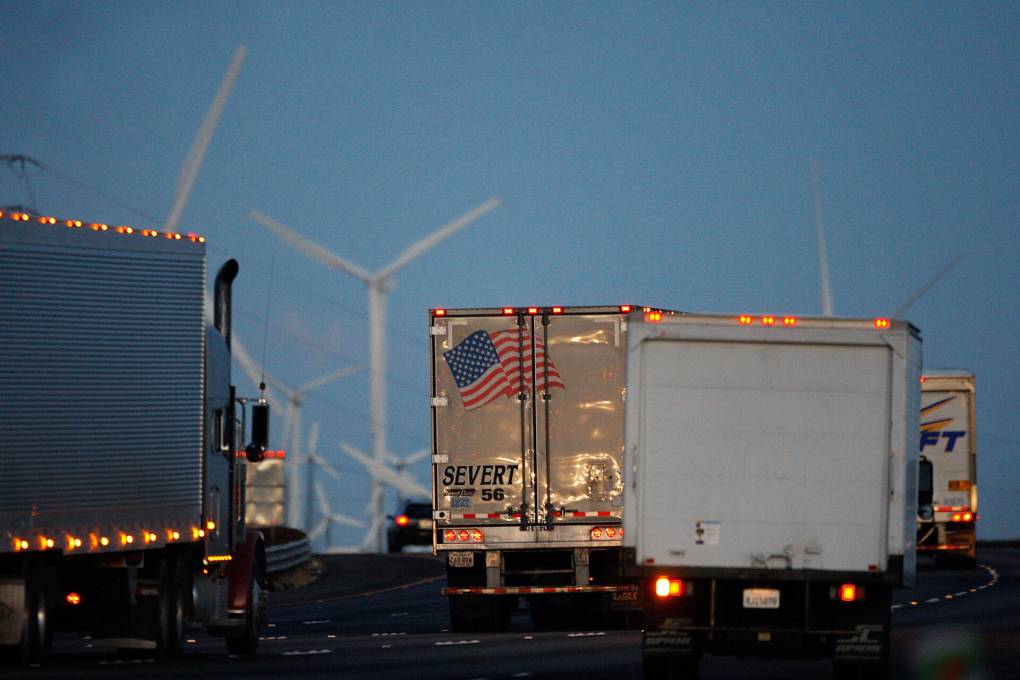The California Air Resources Board approved an ambitious plan today to phase out its diesel truck fleets, from semi-trucks to delivery vans and garbage trucks, despite the opposition of industry groups who said the plan would be near impossible for them to enact.
It is the air board’s latest regulation geared at cleaning up toxic air quality and fighting climate change, and comes a day after the same body passed first-in-the-nation regulations on diesel trains.
The state’s powerful air regulators have been California’s spearpoint in the fight against climate change in recent years, as they’ve charted an ambitious path to siphon down the state’s use of planet-warming fossil fuels over the next two decades, including banning the sale of new gasoline cars after 2035 and forcing the electrification of most of the state’s transportation sector, the largest contributor of carbon emissions in California.

